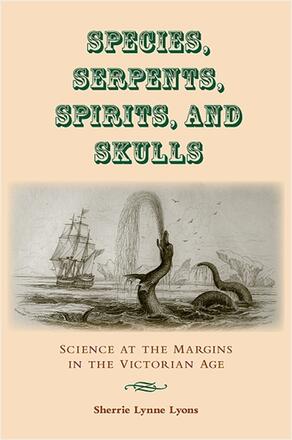
Species, Serpents, Spirits, and Skulls
Science at the Margins in the Victorian Age
Alternative formats available from:
Explores the distinctions between science and pseudoscience.
Description
Science permeates nearly every aspect of our lives, and yet, as current debates over intelligent design, the causes of global warming, and alternative health practices indicate, the question of how to distinguish science from pseudoscience remains a difficult one. To address this question, Sherrie Lynne Lyons draws on four examples from the nineteenth century—sea serpent investigations, spiritualism, phrenology, and Darwin's theory of evolution. Each attracted the interest of prominent scientists as well as the general public, yet three remained at the edges of scientific respectability while the fourth, evolutionary theory, although initially regarded as scientific heresy, ultimately became the new scientific orthodoxy. Taking a serious look at the science behind these examples, Lyons argues that distinguishing between science and pseudoscience, particularly in the midst of discovery, is not as easy as the popular image of science tends to suggest. Two examples of present-day controversies surrounding evolutionary psychology and the meaning of fossils confirm this assertion. She concludes that although the boundaries of what constitutes science are not always clear-cut, the very intimate relationship between science and society, rather than being a hindrance, contributes to the richness and diversity of scientific ideas. Taken together, these entertaining and accessible examples illuminate important issues concerning the theory, practice, and content of science.
Sherrie Lynne Lyons is Assistant Professor at the Center for Distance Learning of Empire State College, State University of New York. She is author of Thomas Henry Huxley: The Evolution of a Scientist.
Reviews
"Species, Serpents, Spirits, and Skulls is a welcome addition to the science educator's toolkit that should help in the struggle to promote better scientific literacy, including the study of pseudoscience. " — Science and Education
"…well written … [and] useful for teaching. " — Journal of British Studies
"Species, Serpents, Spirits, and Skulls is strongest when it immerses the reader in the particulars of Victorian scientific practice and personalities. The narrative flows smoothly, the explanations of unfamiliar scientific concepts are clear, and the stories are satisfyingly complex without becoming impenetrable, even to the general readers who are the book's intended audience … its case studies boldly and clearly advance its central point. " — Reports of the National Center for Science Education
"Lyons makes a convincing argument that even though contemporary science is evidence based, it is not and never will be fully isolated or immune from external influences such as religious belief, social policy, or politics … Highly recommended. " — CHOICE